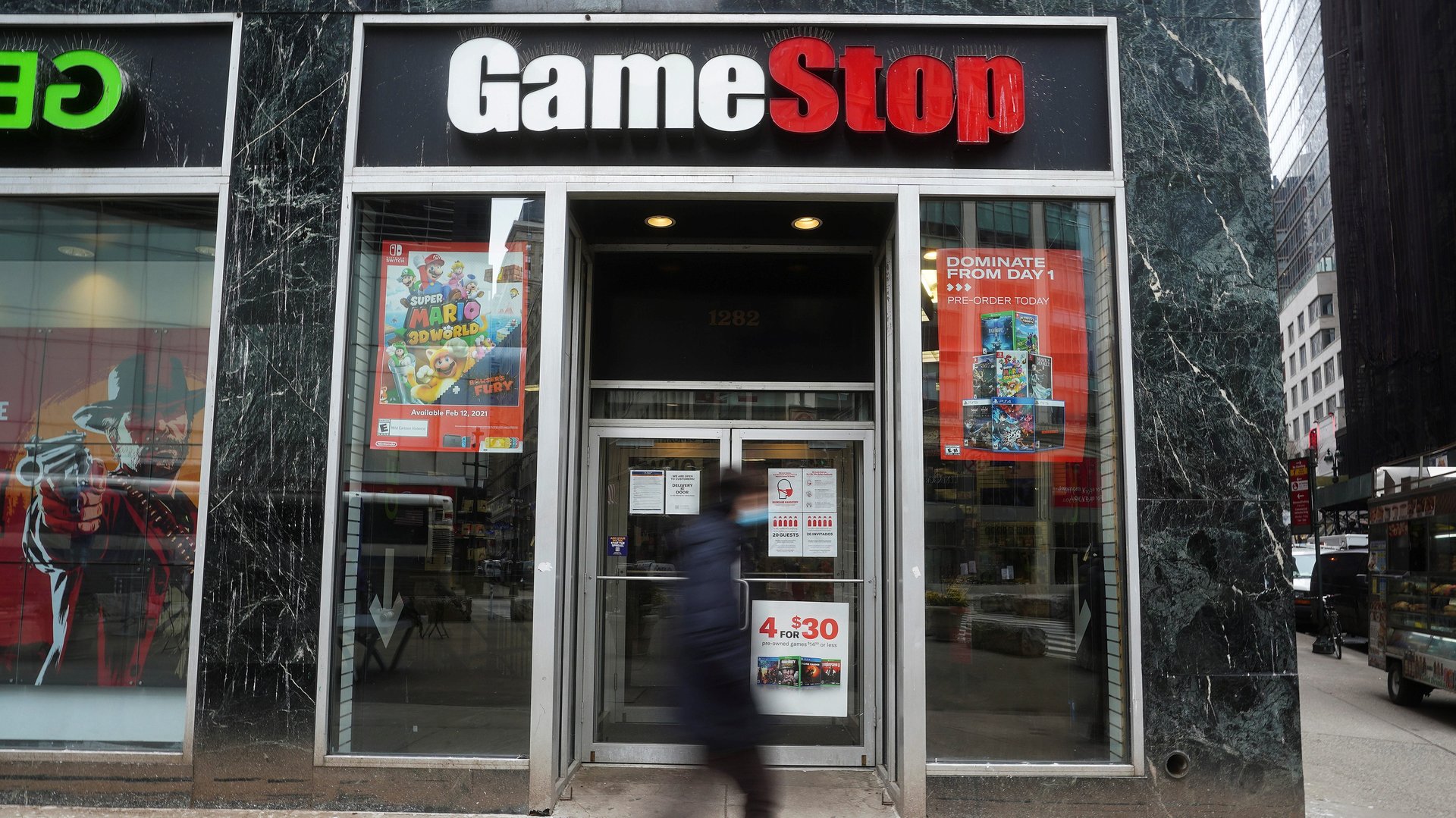The video game industry is leaving GameStop behind
Video game usage is surging to record highs, enriching game developers and console makers, and boosting sales for e-commerce platforms. Just about the only part of the industry that hasn’t benefited is brick-and-mortar retail chains like GameStop, which still rely on physical sales in a world swiftly transitioning to digital transactions.


Video game usage is surging to record highs, enriching game developers and console makers, and boosting sales for e-commerce platforms. Just about the only part of the industry that hasn’t benefited is brick-and-mortar retail chains like GameStop, which still rely on physical sales in a world swiftly transitioning to digital transactions.
Until now. GameStop’s stock is skyrocketing to comical levels as part of an ongoing frenzy orchestrated by small-time investors on Reddit and TikTok. As a way to get back at the hedge funds that were profiting off GameStop’s steadily declining business, these investors banded together to buy the company’s stock and increase its value. That created a “short squeeze,” forcing the hedge funds that had shorted GameStop’s stock to buy more and more shares in order to cover their losses—sending the stock, as these vigilante investors called it, “to the moon.”
The stock’s price reached a high of $483 this morning, up an unfathomable 12,000% from its $4 price around this time a year ago. It has oscillated wildly since then as Robinhood and other stock-trading platforms blocked investors’ ability to purchase GameStop shares, but the value remains much higher than what GameStop’s underlying financials suggest it should be.
This was all only possible because many of GameStop’s deep-pocketed investors were so sure the business was headed for collapse that they bet billions on its demise. And, until very recently, that was a pretty smart bet.
The history of GameStop
Founded in 1984 as a software retailer, GameStop transitioned to games in the early 2000s and was extremely successful, selling consoles, games, and accessories to consumers. At its height around 2011, the company was generating nearly $10 billion in revenue per year and had 6,700 stores. But by 2019, GameStop generated just $6.4 billion in revenue (pdf). Well before the coronavirus pandemic, it laid off hundreds of employees and plans to close more than 1,000 stores in an effort to cut costs.
That’s because video games are increasingly bought and sold online instead of in stores. Gamers can download—or even stream—games to their consoles and PCs without the need to buy physical discs. The growing popularity of mobile and cloud gaming has made the once-necessary trip to the store obsolete. GameStop is the Blockbuster of video games—a relic of old consumption habits, barely scraping by in a digital world.
While digital sales also include content beyond the games themselves, like add-ons and in-game currency, the games are increasingly being bought digitally too. Both Sony’s PlayStation 5 and Microsoft’s next-gen console offer digital editions, which don’t even come with a disc drive. Sony said this year that more than half of video game units it sold in 2020 were digital.
Some users on the WallStreetBets subreddit argued last year that GameStop stock was actually undervalued. Game consumption was up because of the pandemic, and while PlayStation and Microsoft were about to release new consoles with digital-only options, GameStop still stood to make a killing on sales of those consoles. Both factors made GameStop’s situation a little less dire than the hedge funds’ position implied—at least in the near term.
Similar thinking led activist investor Ryan Cohen to invest heavily in the company in 2020, hoping to sway its board to consider a new digital-first direction for the company. “GameStop needs to evolve into a technology company that delights gamers and delivers exceptional digital experiences—not remain a video game retailer that overprioritizes its brick-and-mortar footprint and stumbles around the online ecosystem,” he wrote in an SEC filing in November.
So perhaps there is some hope yet for GameStop, even after this craziness ends. Its next steps are unclear: It could use the temporarily exaggerated value of the company to pay off any outstanding debts and invest in new initiatives. Or it could return to business as usual. But that business was one of fading relevance.